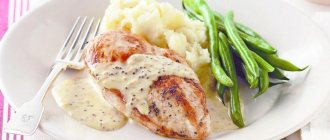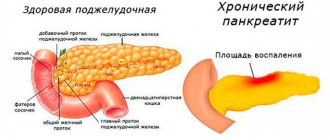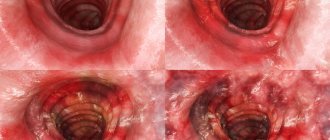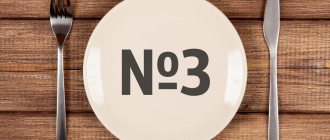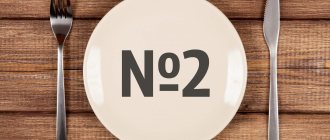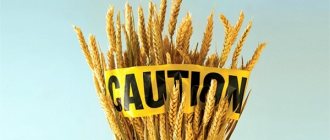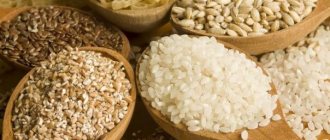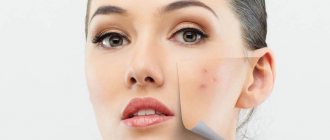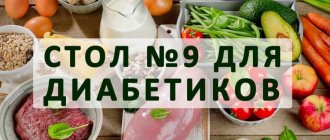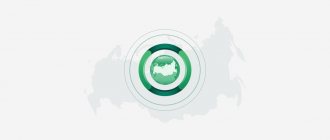- November 23, 2018
- Diets for health
- Lukinova Natalya
In recent years, more and more young people have begun to suffer from the problem of thrombosis, so doctors often prescribe them to take such a well-known drug as Warfarin. Belonging to the group of anticoagulants, it is intended to thin the blood, and therefore is simply necessary for people suffering from a number of diseases of the cardiovascular system, as well as after heart surgery. However, a person who uses this drug is required not only to use it, but also to follow a special diet when taking Warfarin. This article will tell you exactly what foods you can and cannot eat on such a diet, as well as the basic rules that must be followed to get a good result when taking the medicine.
A little about Warfarin
Before talking about the diet with Warfarin, it is worth paying attention to the drug itself and understanding why it is so necessary to adhere to the prescribed diet. The entire effect of this medication, which belongs to anticoagulants, that is, drugs aimed at reducing blood clotting, is due to its composition, which inhibits the activity of vitamin K in the body. It is worth remembering that self-administration of this drug is prohibited, since it can significantly harm the body. Even doctors prescribe it only after a direct medical examination, after which the dosage is carefully calculated, since various side effects often occur.
The prescription of Warfarin and a diet for it can be either short-term or long-term, especially if there is a disease, one of the symptoms of which is thromboembolism or venous thrombosis. However, most often the medicine is used for a short period of time after surgery on the heart muscle, valve installation, acute heart attack, ischemia or atrial fibrillation.
The drug must be taken daily, following the doctor’s instructions, since the effect of its consumption does not appear immediately, but only after 3 days, and any violation of the dosage regimen can lead to noticeable and unpleasant side effects. To prevent them, you should constantly adjust the level of control of the blood clotting index, as well as follow a diet while taking Warfarin. The correct diet during treatment with this drug prevents the formation of blood clots or severe blood thinning.
Recommendations after heart surgery
When prescribing Warfarin after heart surgery, a more restrictive diet is required. As a rule, in such cases, the principles of table No. 10 according to Pevzner and dietary habits when taking the drug are combined.
The main principle of the diet is to minimize salt intake. Therefore, fast food, any salty snacks, canned food and semi-finished products are excluded from the menu.
Other restrictions concern fat and sugar, since their consumption increases the load on the vascular system. To avoid this, you need to give up sweets, baked goods, fried foods, smoked meats and sausages.
As with atrial fibrillation, you should not consume salted, pickled and fermented foods, caffeinated drinks and alcohol. Onions, garlic and all types of legumes are also not recommended. The basis of the diet should be low-fat sources of protein (fish and poultry, dairy products) and vegetables and fruits that do not affect the action of Warfarin.
Diet with Warfarin
The diet when taking Warfarin is followed in order to successfully maintain the salts and minerals necessary for normal functioning in the body, as well as control the amount of vitamin K. That is why you should not hope that without proper nutrition the medicine will have the desired effect and it will help get rid of from problems with the formation of blood clots and a number of other problems. For example, a diet for atrial fibrillation can also improve the condition of blood vessels and normalize the composition of the blood, which helps to significantly cope with the underlying disease itself.
Dietary Basics
The threat of occurrence and predisposition to blood clots requires prolonged use of the drug, which affects the diet. Based on this, table No. 10 is prescribed, with limited salt, liquids, and an emphasis on fresh vegetables.
Vitamin K is excluded. The diet leads to improved metabolism and blood circulation. The functioning of the kidneys and liver is normalized, the load on cardiac activity and blood vessels is reduced.
When taking Warfarin, the products that form the basis of the menu, boiled and steamed, or baked in the oven without oil and fat, are easily digestible:
- Porridges: buckwheat, rice, barley, oatmeal, cooked with water and without salt, support energy with complex carbohydrates and give strength for the coming day. Dressing with oil and broths makes the cereal dish heavier.
- Boiled potatoes are consumed without restriction.
- Bakery products: rye flour crackers, diet bread without additives.
- Fresh vegetables, fruits and herbs according to the table above.
- Boiled lean fish, chicken, beef. Avoid sauces with herbs and spices.
- Egg 1 pc. boiled or baked.
- Diet milk, cottage cheese, kefir with a fat content of no more than 1%. Butter 1 tsp. per day, low fat.
- Vegetables, sources of fiber. Tomatoes and tomatoes, unsweetened green apples, cucumbers, squash.
- Pure water, juices, herbal teas, rosehip drink to quench your thirst.
- Unsweetened desserts are healthy: fruit jelly, jellies and marmalades.
Diet principles
Like any therapeutic nutrition plan, a diet when taking Warfarin requires compliance with a certain set of rules, since it is necessary to carefully control the amount of vitamin K that enters the body with food. The principles of this diet include:
- Refusal of salt - it is completely prohibited to add salt to cooked food, as well as to consume any foods that contain it in large quantities. The recommended amount of salt on such a diet is no more than 7 grams per day.
- Meals should be fractional. In addition, it should be borne in mind that all food eaten must be carefully monitored. In total, there should be 6 or seven meals per day, so you will have to eat often, but in small portions, so that the digestive system does not experience unnecessary stress, and the person does not experience hunger. The maximum amount of food allowed is no more than 400 grams at one time.
- In addition to fractional meals, you should also follow the rule of separate meals. When eating, the patient should consume only compatible foods and exclude incompatible ones from the diet.
Prohibited list
While taking Warfarin, excessive consumption of certain foods and foods may be detrimental to the patient's health.
The list of foods that are recommended to be eliminated from the diet or to minimize their consumption includes:
- High-calorie baked goods with a high sugar content: cakes, butter cookies, puff pastries, as well as bread made from premium flour.
- Canned foods, marinades, pickles.
- Sausages: ham, sausages, fatty kupaty, sausage, both boiled and smoked, half-smoked, raw smoked.
- Chocolate candies.
- Almost all types of cheese, except ricotta (it has low fat content).
- All types of fast food.
- Many varieties of greens: radishes, sorrel, onions, garlic.
- Seaweed, white cabbage.
- Citrus fruits, green unsweetened apples with a high acid content. However, the ban on green apples can be lifted if they are consumed peeled from the hard, tart peel.
- Meat, fish, poultry with a high fat content.
- Excessively fatty dairy and fermented milk products.
- Strong coffee, dark chocolate.
- Cranberries are prohibited both in their natural form and in the form of tinctures and fruit drinks!
Doctors' recommendations
In addition to the basic recommendations that must be followed on the Warfarin diet, doctors also advise adhering to additional rules that help enhance the effect of the drug.
- It is imperative to follow the prescribed drinking regimen, since the amount of water consumed is also controlled. You should not drink more than 1.3 liters of liquid per day, and this includes not only water and juices, but also soups and broths.
- Often, poor blood clotting occurs due to the fact that a large amount of useful substances accumulates in the body. That is why on a diet when taking Warfarin, it is recommended to limit the number of calories consumed per day. The ideal option would be to consume no more than 2590 kcal, which is divided into 67 grams of fat, up to 400 grams of carbohydrates and 85 grams of protein.
Vitamin K levels in foods
The diet that should be followed while taking Warfarin is based primarily on eating foods that contain moderate levels of vitamin K. There are 3 food groups that you should pay attention to:
- Foods high in vitamin K include Brussels sprouts, a variety of greens, chicory, watercress, and liver.
- Medium level of vitamin – rapeseed oil, cucumbers, pistachios, asparagus, cauliflower, lettuce.
- Low content - red apples, beans, bananas, avocados, tomatoes, potatoes, meat, pasta.
In cases where you have consumed products from the first or third lists, you should immediately check your blood clotting level. Consuming them in small quantities will not harm, but it is still better not to risk your health.
What to pay attention to
Vitamin K improves blood clotting. This can have a negative impact on vascular diseases, postoperative conditions on the atria, and atrial fibrillation.
In these diseases, it is important to keep the level of INR - international normalized ratio and prothrombin time in a balanced form. This will help thin and reduce blood clotting.
Blood thickening, the formation of cholesterol plaques, leads to the formation of blood clots, clots and air bubbles that prevent the free movement of blood through the vessels.
When switching to the use of an anticoagulant drug and proper nutrition, make a complete list of vegetables and fruits, and other foods that contain vitamin K. At the same time, the norm for an adult depends on age and weight, approximately 90 mcg per day.
| Name | Vit.K/mcg per 100 g | Name | Vit.K/mcg per 100 g | Name | Vit.K/mcg per 100 g |
| Green tea | 959 | Parsley | 112 | Zucchini | 29 |
| Spinach leaves | 459 | Beef | 111 | Dates | 26 |
| Cabbage | 448 | cod fish | 107 | Eggs | 24 |
| Green peas | 342 | Horseradish | 104 | Avocado | 19 |
| Black tea | 339 | Fish liver (cod, burbot) | 97 | Tomatoes | 14 |
| Legumes | 244 | Potato | 89 | Carrot | 14 |
| Cress - salad | 207 | Rose hip | 88 | Hot red pepper | 12 |
| Broccoli | 206 | Sea kale | 68 | Prunes | 11 |
| Soybean oil | 198 | Cauliflower | 64 | Pears | 6 |
| Green onion | 189 | Green beans | 43 | Grape | 3 |
| Olive oil | 167 | Corn | 47 | Cow's milk | 3 |
| Veal | 159 | Kiwi | 39 | Apples | 3 |
| Beef liver | 153 | cucumbers | 39 | Goat milk | 2 |
| Onion | 151 | Celery | 38 | Raisin | 2 |
| Mutton | 148 | Cashew | 33 | Garlic | 1 |
Consultations and recommendations of a vascular doctor and nutritionist will help you develop a rational menu. It will not be poor in vitamin and mineral composition, and will allow you to keep the INR level at the same point.
Prohibited Products
The list of prohibited foods on a diet when taking Warfarin is quite lengthy, so you should prepare for the fact that you will have to give up many familiar foods. Prohibited foods on this diet include:
- Any confectionery and baked goods, since they contain a huge amount of simple carbohydrates, which, although they provide energy to the body, are then stored in fatty tissue. In addition, consuming large amounts of sugar can be one of the causes of thrombosis and blood thickening.
- Red or fatty meats, as well as sausages due to their high fat and calorie content.
- Pickles and preserves, even homemade ones, contain large amounts of salt and are therefore strictly prohibited. In addition, some vegetables can affect the level of vitamin K in the body, which harms the effectiveness of the medicine.
- It is forbidden to consume citrus fruits as they contain many acidic components and sugar, which contribute to blood thickening.
- Prohibited vegetables include: cabbage, radishes and spinach. You should also avoid any legumes such as beans, peas, and lentils. It is allowed to add onions and garlic to dishes in small quantities.
Fully or partially limited products
The diet when taking Warfarin involves the exclusion of:
- Concentrated meat/fish and mushroom broths.
- Fatty varieties of red meat, smoked sausages, goose and duck meat, canned meat and fish, mayonnaise, bacon, ham, animal/confectionery fat.
- Pickles, marinades, smoked meats, legumes, pasta, white bread, salty and fatty cheeses, baked goods, confectionery and especially with cream, chocolate, fried chicken eggs, fast food.
- Green tea, coffee, cocoa, alcohol-containing drinks.
- High-fat dairy products (cream, sour cream, cottage cheese, baked milk, yogurt with additives).
- Vegetables and fruits of dark green color (cabbage, amaranth greens, avocado, spinach, coriander leaves, cilantro, cucumber peel, parsley, kiwi fruits, lettuce, mint).
- Limit salt intake to 5-7 g/day and salty foods.
Table of prohibited products
| Proteins, g | Fats, g | Carbohydrates, g | Calories, kcal | |
Vegetables and greens | ||||
| canned vegetables | 1,5 | 0,2 | 5,5 | 30 |
Snacks | ||||
| potato chips | 5,5 | 30,0 | 53,0 | 520 |
Flour and pasta | ||||
| vareniki | 7,6 | 2,3 | 18,7 | 155 |
| dumplings | 11,9 | 12,4 | 29,0 | 275 |
Bakery products | ||||
| sliced loaf | 7,5 | 2,9 | 50,9 | 264 |
| buns | 7,9 | 9,4 | 55,5 | 339 |
Confectionery | ||||
| cookie | 7,5 | 11,8 | 74,9 | 417 |
| cake | 3,8 | 22,6 | 47,0 | 397 |
Cakes | ||||
| cake | 4,4 | 23,4 | 45,2 | 407 |
Chocolate | ||||
| chocolate | 5,4 | 35,3 | 56,5 | 544 |
Raw materials and seasonings | ||||
| mayonnaise | 2,4 | 67,0 | 3,9 | 627 |
Dairy | ||||
| milk | 3,2 | 3,6 | 4,8 | 64 |
| cream 35% (fat) | 2,5 | 35,0 | 3,0 | 337 |
| sour cream 30% | 2,4 | 30,0 | 3,1 | 294 |
Cheeses and cottage cheese | ||||
| cheese | 24,1 | 29,5 | 0,3 | 363 |
Meat products | ||||
| fried pork | 11,4 | 49,3 | 0,0 | 489 |
| fatty pork | 11,4 | 49,3 | 0,0 | 489 |
| pork fat | 1,4 | 92,8 | 0,0 | 841 |
| bacon | 23,0 | 45,0 | 0,0 | 500 |
Sausages | ||||
| smoked sausage | 28,2 | 27,5 | 0,0 | 360 |
| smoked sausage | 9,9 | 63,2 | 0,3 | 608 |
Bird | ||||
| duck | 16,5 | 61,2 | 0,0 | 346 |
| goose | 16,1 | 33,3 | 0,0 | 364 |
Fish and seafood | ||||
| fried fish | 19,5 | 11,7 | 6,2 | 206 |
Oils and fats | ||||
| cooking fat | 0,0 | 99,7 | 0,0 | 897 |
| rendered pork fat | 0,0 | 99,6 | 0,0 | 896 |
Alcoholic drinks | ||||
| white dessert wine 16% | 0,5 | 0,0 | 16,0 | 153 |
| vodka | 0,0 | 0,0 | 0,1 | 235 |
| cognac | 0,0 | 0,0 | 0,1 | 239 |
| liquor | 0,3 | 1,1 | 17,2 | 242 |
| beer | 0,3 | 0,0 | 4,6 | 42 |
Non-alcoholic drinks | ||||
| cola | 0,0 | 0,0 | 10,4 | 42 |
| coffee | 0,2 | 0,0 | 0,3 | 2 |
| Pepsi | 0,0 | 0,0 | 8,7 | 38 |
| black tea | 20,0 | 5,1 | 6,9 | 152 |
| energy drink | 0,0 | 0,0 | 11,3 | 45 |
| * data is per 100 g of product | ||||
Drinking regime
As mentioned earlier, on a diet when taking Warfarin, the list of permitted liquids is quite small, so juices and water should be drunk in minimal quantities - no more than 1.3 liters per day. Preference should be given to clean water without gas, weak green or mint tea, vegetable smoothies, and rosehip infusion.
In addition, you should completely avoid any drinks that have an invigorating effect - these include strong coffee, cocoa, energy drinks, and tea. You should also avoid hot chocolate, milk, milkshakes, sparkling water and compotes. On this diet, you don’t even need to think about drinking alcohol, because even low-proof alcohol can negatively affect your health.
Mode
One cannot think that medication and nutrition prescribed for a long or short-term period will radically change the patient’s eating habits. The task of the doctor and the patient himself is to focus his desires on achieving health and a long life.
From the list of permitted products, you can prepare delicious and healthy dishes that are in no way inferior to culinary delights. Numerous recipes based on dietary foods have appeared on various resources, counting calories and taking into account weight and age.
Divide the daily norm into 5-7 parts so as not to feel hungry. For each snack, count 400 g, which prevents a person from overeating.
Diet meals are easily digestible and give a feeling of fullness. Internal organs begin to work in a new way, getting used to the rhythm and stress that must be withstood for a long time.
Authorized Products
Now we should talk about allowed foods on the diet when taking Warfarin (with a mechanical valve, ischemia, atrial fibrillation and other diseases, it is imperative to take this medicine). Such products include:
- A variety of porridges, since they contain complex carbohydrates that saturate the body and maintain its energy balance. They must be cooked in water or vegetable broth without adding oils or salt, since food prepared in this way will be more nutritious.
- Lean meats and fish are also allowed, so steamed turkey or chicken fillets are a great option. Among the varieties of fish, it is recommended to add bream, pollock, carp and hake to the diet.
- Pasta is also a good source of carbohydrates, but you need to consume them in small quantities - no more than 300 grams.
- Low-fat fermented milk products are also allowed, but their fat content should not exceed 1%. It is best to pay attention to low-fat cottage cheese, fermented baked milk and kefir.
- Allowed vegetables include tomatoes, pumpkin and zucchini. Carrots, cauliflower and celery can be added at times as they contain small amounts of vitamin K and fibre.
General rules
The indirect oral anticoagulant Warfarin is the drug of choice for the prevention and treatment of a number of thrombotic complications. As a rule, the drug is prescribed for a long period. vitamin K antagonist , is considered to be the “gold standard” of the group of indirect-acting anticoagulants due to its relatively low toxicity, rapid onset of action and short aftereffect. Refers to monocoumarin .
The mechanism of its action is based on the blockade of one of the stages of the synthesis of vitamin K-dependent blood coagulation factors - VII, IX, X, and II ( prothrombin ), the synthesis of which is carried out by liver cells, which leads to hypocoagulation and weakening of Ca2+ dependent reactions in the coagulation mechanism blood and prevents the formation of thrombin and, accordingly, the development/progression of arterial/venous thromboembolism.
Anticoagulant therapy with indirect oral coagulants is prescribed for acute venous thrombosis, cardiac arrhythmias ( atrial fibrillation ), pulmonary embolism , thrombosis of the coronary, peripheral and cerebral arteries, myocardial infarction , postoperative thrombosis , thrombophilia , and the presence of prosthetic heart valves.
An important feature of prescribing the drug is the need for precise dosage, since incorrect administration/overdose of Warfarin can cause side effects of varying severity, including acute internal bleeding with a fatal outcome. Therefore, when using Warfarin, constant monitoring of blood parameters (in particular INR) and diet is necessary, since it is food containing a lot of vitamin K that weakens the effect of the drug and increases the risk of complications.
The diet when taking Warfarin is based on the principles of rational nutrition and is aimed at maintaining a constant amount of vitamin K in the diet. That is, you should not suddenly change your usual diet, including increasing/limiting foods containing large amounts of this vitamin, since its excess in the body weakens the effect of the drug, and its sharp decrease can enhance the effect of Warfarin.
Therefore, it is important to ensure that the level of vitamin K received daily from food is approximately the same in order to create optimal conditions for the action of the drug, since its dosage significantly depends on the amount of vitamin K received from food. And for this you need to be well versed in the content of vitamin K in food and in the daily diet in general.
Its maximum amount is found in dark green leafy vegetables/herbs (green cabbage, amaranth greens, avocado, spinach, coriander-cilantro leaves, cucumber peel, parsley, kiwi fruits, lettuce, mint), and in green tea. An intermediate amount is found in pale green plants (Brussels sprouts, broccoli, lettuce), as well as in legumes and mayonnaise.
In vegetable oils, its content varies depending on the type of oil - more is found in soybean, olive, and rapeseed oil. In baked goods, dairy and meat products, mushrooms, black tea/coffee, its content is relatively low. The table below gives some idea of this.
| Product Name | Amount of vitamin K in mcg/100 g of product |
| Spinach leaves | 415 |
| Soybean oil | 193 |
| Watercress | 205 |
| Broccoli | 175 |
| Green tea | 700 |
| Cauliflower | 85 |
| Beef liver | 93 |
| Butter | 32 |
| Hard cheeses | 35 |
| Green tomatoes | 80 |
| Beans | 45 |
| Potato | 16 |
Proper nutrition when taking Warfarin can be based on the principles of therapeutic dietary Table No. 10 . Soups are vegetarian. As protein products, it is recommended to include low-fat fish, dietary poultry and rabbit in the diet. Preferably boiled/steamed meat without skin or visible fat. Vegetable fats are preferred - any unrefined virgin oils and unsalted butter in an amount of no more than 30 g / day.
Among carbohydrates, preference is given to products containing complex carbohydrates - porridge cooked in water, whole grain pasta, dried rye bread. Boiled potatoes and diet bread are allowed. The main sources of fiber should be your usual types of greens and vegetables/fruits. It is also allowed to eat a boiled/soft-boiled egg (one per day) and include sauces based on dairy products in the diet.
There is practically no limit on fermented milk products with low fat content. Drinks include rosehip decoction, weak black tea, pure water, fruit compotes from sweet fruits. Meals are fractional.
When taking Warfarin, it is necessary to exclude white bread, pastries, puff pastry and products made from it, cakes, biscuits, and cookies from the diet. You should avoid fatty red meat and poultry, as well as fatty sausages, smoked meats, canned food, fatty fish, concentrated meat/fish broths, animal and cooking fats.
It is especially important not to include in the diet if they were not previously present in the list of products: spinach, sorrel, radishes, cabbage of various types, daikon, garlic, radish, cilantro, parsley, kiwi fruits, avocado, green tea or maintain their use in those the same quantities as before starting Warfarin.
Salty/fatty cheeses, fried/hard-boiled eggs, legumes, mushrooms, pickled, salted and pickled vegetables, fruits with coarse fiber, natural coffee, chocolate, cocoa, and alcoholic beverages are limited. Any fried food is excluded. Salt intake is 5-7 g/day.
It is important to monitor the intake of multivitamins containing vitamin K. Regular consumption of cranberry berries/juice can also potentiate the effect of the drug. Quinine, which is part of a number of tonic drinks, also has the ability to enhance the effect of Warfarin.
Some medicinal plants can also both enhance the effect of Warfarin (gingko biloba, garlic, angelica, papaya, sage) and reduce its effectiveness - ginseng and especially St. John's wort and its preparations. At the same time, the effect of inducing the action of Warfarin persists for another 2 weeks after the end of the course of taking St. John's wort-containing drugs.
Diet with "Warfarin" - daily nutrition table
When preparing a proper diet that will improve the effect of the drug, you should focus on the above recommendations. Below is an example of a diet when taking Warfarin in the form of a table for one day, taking into account fractional and separate meals, which can be used as a basis.
| Eating | Diet |
| 1 breakfast | Steamed meat soufflé, semolina porridge cooked in milk and a cup of tea with milk. |
| 2 breakfast | Baked green apple. |
| Dinner | Rice soup with vegetables (must be pureed before use), boiled beef with a side dish of stewed beets and fruit jelly. |
| Afternoon snack | A cup of rose hip decoction and breadcrumbs sprinkled with a little sugar. |
| Dinner | Carrot puree on the side with baked meat cutlets, carrot and apple balls for dessert and a cup of mint tea. |
| Before bedtime | A glass of low-fat kefir. |
Menu for the week
When planning a diet, the diet should be developed in conjunction with a professional nutritionist. Below is a sample menu for the week:
Monday
- For breakfast – milk buckwheat porridge, grape juice.
- Lunch – vegetable soup, rye bread.
- Dinner – boiled chicken with a side dish of rice and vegetables.
- Before going to bed, it is recommended to drink fermented baked milk (200 ml).
Tuesday
- Breakfast - a bread sandwich with jam, tea with lemon balm.
- Lunch – chicken cooked in the oven, vegetable salad, black bread.
- Dinner – potatoes with boiled vegetables.
- Before bed – rosehip decoction (250 ml).
Wednesday
- Breakfast – fruit salad with yogurt.
- Lunch – pasta with mild tomato sauce and sesame seeds, juice from a mixture of apple and grapes.
- Dinner – turkey and side dish of corn.
- Before bed - yogurt.
Thursday
- Breakfast – cereal flakes with yogurt.
- Lunch – sea fish with mashed potatoes, dried apricot compote.
- Dinner – vegetable stew with rice side dish.
- Finish the day with a glass of herbal tea.
Friday
- Breakfast – feta cheese (unsalted), grain bread, compote.
- Lunch – salmon fish with vegetable side dish.
- Dinner – vegetable cutlets, herbal tea.
- Before lights out - yogurt.
Saturday
- Breakfast – oatmeal with nuts and dried fruits.
- Lunch – baked salmon slices with a side dish of sprouted wheat grains.
- Dinner – cottage cheese casserole, topped with sour cream.
- Before bed - kefir.
Sunday
- Breakfast – wheat porridge with milk, freshly squeezed orange juice.
- Lunch – mackerel with potato side dish, rye bread.
- Dinner – casserole topped with sour cream.
- You can end the day by drinking a glass of kefir.
The above menu illustrates the principle approach to dietary nutrition. Herbal tea plays an important therapeutic and preventive role. Sugar and salt should be limited as much as possible.
Timing of the diet
Like any medicinal diet that has a limited range of products, it is primarily aimed at transferring the body to proper nutrition. The diet when taking Warfarin, in terms of its food set, is quite reminiscent of table No. 10. You should stick to it only while taking the drug as prescribed by a doctor, and not use it yourself, as you can greatly harm the body and reduce the effect of the drug, since problems problems with blood clotting are quite serious; due to improper nutrition, it can become too liquid or, conversely, begin to form blood clots.
Advantages and disadvantages
First of all, people on a diet suffer from the fact that they cannot eat their previously favorite foods. You can eat well, getting the necessary vitamins and minerals without losing your sense of taste.
The advantages are obvious:
- The patient loses weight and will meet physical and physiological parameters.
- With prolonged normalized nutrition, it is possible that dormant or suppressed physiological processes necessary for a person will be launched and the body’s healing will begin.
- Food prices are not so high, since food products that are expensive to prepare and cost are disappearing from the diet.
- Due to the fashionable trend towards healthy eating that has appeared in recent years, the circle of acquaintances and communication may expand. PP-nicks often unite in groups to share time, training and interests with the obligatory observance of a healthy lifestyle.
- the temporary duration of food restriction, depending on the duration of use of the medicine;
- systematic monitoring of INR.
Issues related to health and medication should be discussed with your doctor, who will select individual and optimal treatment options. The specialist will also advise what you can eat while taking Warfarin.
The drug Warfarin belongs to the group of anticoagulants - drugs that reduce the ability of blood to clot and slow down the process of thrombus formation. The discovery of Warfarin occurred in the 30s of the last century while identifying the causes of the mass death of cattle due to internal bleeding.
In the first years, the drug was used as rat poison. But since 1950, this remedy was patented and began to be widely used as a medicine. Among the manufacturers of the drug is the company Nycomed.
